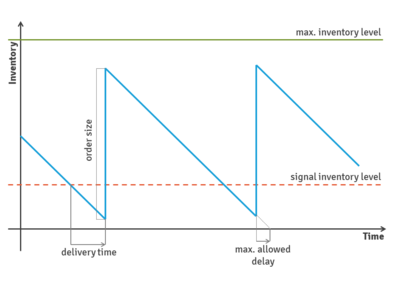Optimum size of the order
| Optimum size of the order |
|---|
| See also |
Optimal order size is used in the management of the company's stock levels. The main function of the stock in the company is to ensure the continuity of the business.
Inadequate stocks of materials and products can interrupt the continuity of the process of production and sales, and thereby result in loss of business. However, too much inventory causes unnecessary costs of storage.
Stocks decrease sensitivity to disruption in the process of supply and increase the company's flexibility in relation to the clients needs: execution of orders in the right quantities and at the right time. Under conditions of high inflation they allow to obtain the benefits associated with an increase in supply prices. Inventory management take into account the benefits and costs of holding stocks.
To determine the optimal size of a single order manager must take into account two factors:
- nature and volume of the demand for individual materials used in the production process (decided by the level of production and the level of consumption of raw materials and consumables for producing units of the product). Rate of production can be specified using the construction and technology documentation.
- purchase costs (including the costs associated with preparing contract, the insurance costs of transport, transport costs, the costs of entering into stock, etc.), and the cost of storage of these materials (e.g. the cost of the lease and rental of storage area, losses resulting from deterioration or loss of stored materials).
Formula
Optimal order quantity is given by:
where:
- Q - optimal quantity (in natural units) of the item, or range of items, in each delivery protecting performance of the production processes,
- S - material consumption of given material of group of materials (associated with technological standard specification of process) expressed in natural units in a given period for a given volume of production,
- O - unit cost of materials ordered (for example,. price)
- C - fixed costs associated with the storage of materials ordered for the period in question.
See also:
References
- Simmen, D., Shekita, E., & Malkemus, T. (1996, June). Fundamental techniques for order optimization. In ACM SIGMOD Record (Vol. 25, No. 2, p. 57-67). ACM.

